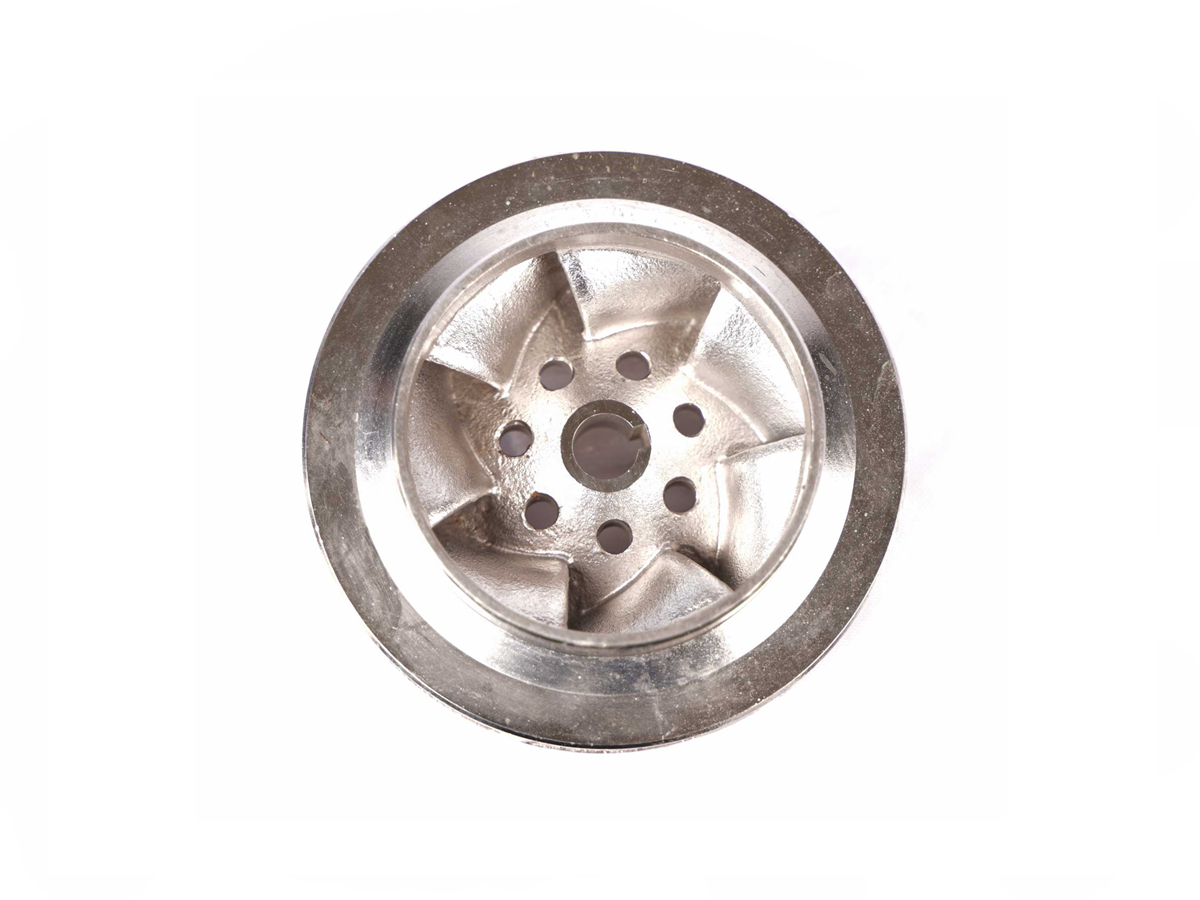Custom CNC Machining of Key Components for Nuclear Reactor Efficiency
Introduction to CNC Machining in Nuclear Reactor Applications
Achieving optimal efficiency and safety in nuclear reactors demands precise and durable components capable of withstanding extreme environments, including radiation, high temperatures (up to 850°C), and aggressive chemical conditions. Custom CNC machining is essential for fabricating critical reactor components such as fuel assemblies, control rod mechanisms, heat exchangers, and structural internals. Advanced CNC technology delivers exceptional dimensional accuracy (±0.005 mm), surface integrity, and component reliability required by the nuclear, power generation, and industrial equipment industries.
With state-of-the-art CNC machining capabilities, manufacturers ensure reactor efficiency, reduced downtime, and adherence to stringent regulatory standards, contributing significantly to nuclear plant performance and safety.
Material Comparison for Nuclear Reactor CNC Components
Material Performance Comparison
Material | Tensile Strength (MPa) | Radiation Resistance | Corrosion Resistance | Typical Applications | Advantage |
|---|---|---|---|---|---|
880-1035 | Excellent | Outstanding | Reactor internals, heat exchangers | High corrosion resistance at elevated temperatures | |
485-620 | Good | Excellent | Structural supports, coolant piping | Cost-effective, reliable corrosion resistance | |
550-700 | Exceptional | Outstanding | Fuel cladding, reactor cores | Exceptional neutron transparency and corrosion resistance | |
690-830 | Excellent | Exceptional | Chemical control systems, valves | Superior resistance to corrosion and radiation |
Material Selection Strategy for CNC Machined Reactor Components
Selecting appropriate materials for reactor efficiency involves assessing factors such as radiation resistance, thermal stability, corrosion performance, and mechanical durability:
Reactor internals, heat exchangers, and components experiencing extreme temperatures (up to 850°C) significantly benefit from Inconel 625, offering superior corrosion and radiation resistance at high temperatures.
Structural supports, coolant piping, and moderate-stress components are typically fabricated from Stainless Steel SUS304L, providing reliable corrosion resistance and cost-effective performance in reactor environments.
Fuel cladding and reactor core elements requiring excellent neutron transparency and exceptional corrosion resistance select Zirconium Alloys, crucial for efficient reactor operation.
Components exposed to aggressive chemical and radioactive environments, such as valves and chemical control systems, benefit from Hastelloy C-22, ensuring maximum corrosion resistance and reliability.
CNC Machining Process Analysis for Nuclear Reactor Components
CNC Machining Processes Performance Comparison
CNC Machining Technology | Dimensional Accuracy (mm) | Surface Roughness (Ra μm) | Typical Applications | Key Advantages |
|---|---|---|---|---|
±0.003-0.01 | 0.2-0.6 | Complex reactor components, heat exchanger plates | High precision, complex geometries | |
±0.005-0.01 | 0.4-1.6 | Cylindrical reactor parts, fuel rods | Excellent dimensional stability | |
±0.002-0.005 | 0.1-0.4 | Precision fuel handling components, control rods | Superior precision, stress-free machining | |
±0.002-0.005 | 0.05-0.2 | High-precision sealing surfaces, bearings | Exceptional surface finishes, tight tolerances |
CNC Machining Process Selection Strategy for Reactor Components
Choosing the right CNC machining processes for nuclear reactor components is guided by complexity, dimensional accuracy, surface quality, and component function:
Complex reactor components and intricate heat exchanger plates needing tight tolerances (±0.003-0.01 mm) significantly benefit from Multi-Axis CNC Milling, ensuring precise geometry and consistent quality.
Cylindrical reactor components and fuel rods requiring high dimensional accuracy (±0.005-0.01 mm) are efficiently machined using CNC Turning, achieving excellent stability and repeatability.
Components requiring intricate internal structures, such as precision fuel handling components and control rods (±0.002-0.005 mm tolerance), rely on EDM machining, offering stress-free, high-precision results.
Critical sealing surfaces, bearing elements, and high-tolerance mating parts needing ultra-precise finishes (Ra ≤0.2 μm) and extreme accuracy (±0.002-0.005 mm) utilize CNC Grinding, enhancing efficiency and reliability.
Surface Treatment Solutions for CNC Machined Reactor Components
Surface Treatment Performance Comparison
Treatment Method | Radiation Resistance | Corrosion Resistance | Max Operating Temp (°C) | Typical Applications | Key Features |
|---|---|---|---|---|---|
Excellent | Excellent (~1200 hrs ASTM B117) | 350 | Reactor internals, coolant systems | Reduced contamination risk, smoother surfaces | |
Good | Excellent (~1000 hrs ASTM B117) | 300 | Stainless steel piping, coolant lines | Improved surface purity and corrosion resistance | |
Excellent | Outstanding (~1500 hrs ASTM B117) | 500 | Critical valve components, moving assemblies | Superior durability, corrosion, and wear resistance | |
Excellent | Excellent (~1200 hrs ASTM B117) | 550 | High-wear reactor parts | Increased hardness, enhanced fatigue life |
Surface Treatment Selection Strategy for Nuclear Reactor CNC Parts
Surface treatments for reactor components enhance corrosion protection, radiation resistance, and durability:
Reactor internals and coolant systems benefit from Electropolishing, significantly reducing contamination risks and providing a smoother, corrosion-resistant surface.
Stainless steel components and coolant piping benefit from Passivation, significantly improving corrosion resistance and prolonging service life.
Critical valve components, control rod mechanisms, and moving reactor assemblies utilize advanced PVD coatings for superior wear resistance, durability, and operational reliability.
Nitriding is ideal for reactor components subjected to high wear and friction, such as bearings and turbine components, enhancing hardness, durability, and component lifespan.
Quality Control Standards for CNC Machined Reactor Components
Quality Control Procedures
Comprehensive dimensional inspections using Coordinate Measuring Machines (CMM) and optical metrology systems.
Surface roughness and surface integrity evaluations using advanced profilometers.
Mechanical property verification (tensile, hardness, fracture toughness) adhering to ASTM and ASME standards.
Radiation resistance and corrosion testing under realistic operating conditions.
Non-destructive testing (ultrasonic, radiographic, eddy-current) to ensure component structural integrity and safety.
Extensive documentation and traceability protocols compliant with ISO 9001, ASME NQA-1, and nuclear regulatory guidelines.
Industry Applications of CNC Machined Reactor Components
Typical Applications
Fuel assemblies and fuel cladding components.
Control rod drive mechanisms.
Reactor core structural internals.
High-performance heat exchangers and coolant systems.
Related FAQs:
Why is CNC machining critical for nuclear reactor efficiency?
What materials are best suited for CNC machined reactor components?
Which CNC machining processes offer the highest precision for nuclear components?
How do surface treatments improve reactor component reliability?
What quality standards govern CNC machining in the nuclear industry?

